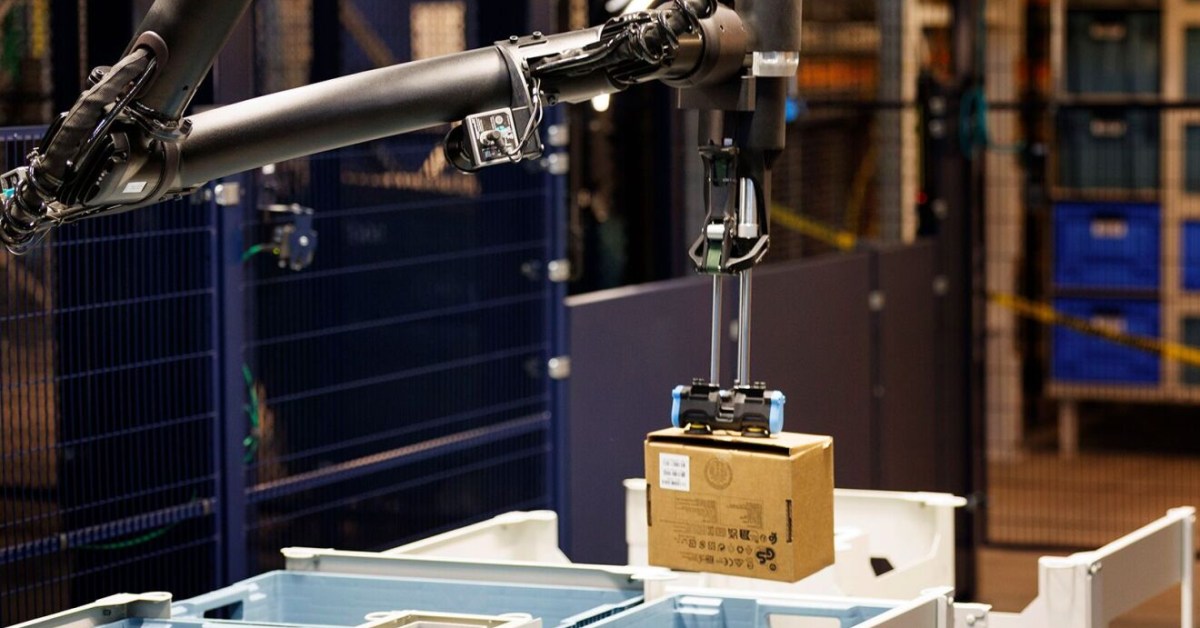Amazon Highlights New Robotics and AI Initiatives Amid Workforce Efficiency Push

Key Points
- Amazon introduced ten robots, including Blue Jay and Project Eluna, to improve fulfillment efficiency.
- Blue Jay can handle 75 percent of warehouse items and consolidates multiple tasks into a single workspace.
- Project Eluna functions as an AI teammate, reducing cognitive load and optimizing sorting.
- Chief technologist Tye Brady stressed the focus on supporting workers, not replacing them.
- CEO Andy Jassy said generative AI will shift some jobs while creating new roles, anticipating workforce reductions over the next few years.
- Amazon highlighted its record of job creation and plans to fill 250,000 seasonal positions.
- The automation push aims to cut e‑commerce costs and increase processing capacity with fewer employees.
Amazon announced a suite of new robotics and artificial‑intelligence tools designed to streamline its fulfillment operations. The company showcased ten robots, including the Blue Jay system that acts as an extra set of hands for employees, and Project Eluna, an AI assistant that helps reduce cognitive load. Amazon executives emphasized that the focus is on supporting workers rather than replacing them, citing the company's record of job creation and plans to fill hundreds of thousands of seasonal positions. CEO Andy Jassy noted that generative AI will shift some tasks while creating new roles, underscoring a broader efficiency strategy for the near future.
Robotics Rollout and Capabilities
Amazon unveiled a portfolio of ten robots currently in use or testing across its fulfillment network. Central to this rollout is the Blue Jay robot, described as "an extra set of hands" that assists employees with reaching and lifting tasks. Blue Jay can move 75 percent of the items stored in Amazon warehouses and is intended to become a core technology for Same‑Day delivery sites. The system coordinates multiple robotic arms to perform several functions simultaneously, consolidating what previously required three separate stations into a single workspace that can pick, stow, and consolidate items in one place.
In addition to Blue Jay, Amazon highlighted Project Eluna, an AI‑driven “agentic” system that acts like an extra teammate. Eluna is designed to reduce cognitive load for workers while optimizing sorting processes to alleviate bottlenecks.
AI Integration and Workforce Strategy
Amazon Robotics chief technologist Tye Brady emphasized that the headline is not about robots replacing people, but about people shaping the future of work together with technology. The company’s messaging reiterated a spokesperson’s claim that no other U.S. company has created more jobs over the past decade. Amazon also announced plans to fill 250,000 positions for the upcoming holiday season, reinforcing its commitment to job creation.
CEO Andy Jassy, in a recent letter to employees, addressed the impact of generative AI on the workforce. He explained that the company will need fewer people for some existing jobs while requiring more people for new types of roles. Jassy acknowledged uncertainty about the net effect but projected that efficiency gains from AI will reduce the total corporate workforce over the next few years.
Operational Impact and Future Outlook
The new robotics and AI tools are part of a broader effort to cut e‑commerce costs while increasing processing capacity. By redesigning warehouse facilities to handle more items with fewer employees, Amazon aims to let its workforce focus increasingly on overseeing and maintaining the robotic systems.
While the company promotes these technologies as enhancements for employees, the rollout reflects a strategic shift toward automation and AI‑driven efficiency across Amazon’s logistics network.